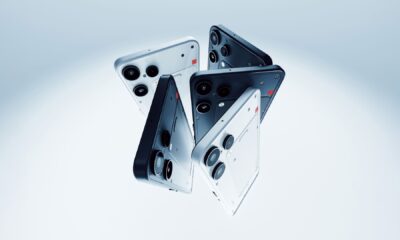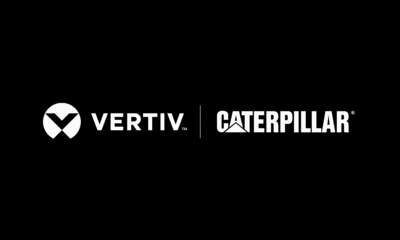Automotive
2025 Chevrolet Corvette ZR1: The Fastest, Most Powerful Corvette Ever

Chevrolet has unleashed the unthinkable in the Corvette ZR1. The King of the Hill returns with the most powerful V8 ever produced in America from an auto manufacturer, mind-bending specs, and iconic design to challenge the world’s best supercars in both coupe and convertible variants.
“The team that revolutionized Corvette with a mid-engine architecture took on another challenge: take ZR1 to the next level,” said Scott Bell, vice president, Chevrolet. “Corvette ZR1 is about pushing the envelope with raw power and cutting-edge innovation. From Stingray, to Z06, E-Ray, and now ZR1, the Corvette family continues to elevate with each new iteration — and challenge the best in the world.”
Pushing the boundaries of the Small Block
ZR1’s 5.5L LT7 twin-turbocharged DOHC V8 engine starts with the same architecture as Z06’s LT6, the most powerful naturally aspirated production V8 engine ever, and takes it to the next level with twin turbochargers — the first time ever for a factory Corvette.
Dubbed the “Small Block Gemini” architecture, the LT6 program was only the beginning as engineers dual-pathed a goal: to create massive power, capability, and character from naturally aspirated and turbocharged flat plane crankshaft twin engines. With these goals in mind, engineers did not create an LT6 with turbochargers, but instead changed and optimized virtually every system for a boosted application.
Corvette ZR1’s 5.5L, twin-turbo DOHC flat-plane crank LT7 engine is the result of engineering prowess and pushing the boundaries of what the engine architecture can do. Thoughtful planning produced the best performance from forced induction, married with the 5.5L flat-plane engine architecture.
Unique to the 5.5L LT7 twin-turbo V8:
- • Head castings with unique ports and a larger combustion chamber
- • Valve train timing and lift profile optimized for forced induction with higher exhaust temp enabling exhaust valves
- • Completely new intake system tuned for twin turbochargers
- • CNC machined combustion chamber, exhaust, and intake ports specific to the LT7
- • Dual, ported shroud, ball bearing, mono-scroll (76 mm) turbochargers integrated with the exhaust manifold to reduce the volume and distance from the exhaust valve to the turbine wheel for quick response with electronic wastegates
- • Intelligent anti-lag engine calibration techniques specifically for ZR1 that adapt and react to driving style
The LT7 engine also builds upon this engine architecture with:
- • Added block and head machining to support turbo cooling and oiling
- • Counterweight changes to account for a unique piston, and unique connecting rod for the crank train
- • A secondary port fuel injection system added to deliver the needed additional fuel to support the engine’s massive output
To support the dramatic increase in power from the LT7 engine, engineers made numerous changes to the Corvette ZR1’s eight-speed dual-clutch transmission, including:
- • Inner and outer input shaft upgrades
- • Increased gear capacity with strength increased via shot peening for all gears
- • Final drive refinements
- • Oil management to support increased vehicle longitudinal and lateral capability
- • Increased control valves to accommodate the higher required clutch clamp load for LT7
The LT7 engine is purpose-built to accomplish its four-figure horsepower mission with no compromises in componentry and maintains the rev-happy character that is the heart of the Small Block Gemini engine family. It will be hand-assembled by the master engine builders at the Performance Build Center, part of the Bowling Green Assembly Plant in Kentucky.
Enabling speed with ease
Purposeful aerodynamics provide the most downforce ever from a Corvette with over 1,200 pounds (544 kg) at top speed.
The Corvette ZR1 offers speed on tap like no Corvette before it. Two distinct setups, complete with Magnetic Ride dampers, accomplish this. The standard Corvette ZR1 chassis arrives with a sleeker body with lower drag and a small spoiler with customer-adjustable short and tall wickers. It also includes a standard carbon-fiber front splitter, rocker moldings, side intake with integrated brake cooling, and front underwing with stall gurney deflectors. Michelin Pilot Sport 4S tires wrap 20-inch front, and 21-inch rear wheels. The standard chassis blends the best of on-road comfort and track capability with this setup.
Corvette ZR1 dispatches the world’s toughest tracks with ease, not only with the power from the 5.5L LT7 engine, but also due to additional, specific aerodynamic and cooling changes found throughout the car. These include:
- • Flow-through hood: Air enters the front grille, flows through the intercooler heat exchanger, and exits the hood to increase front downforce and cool charged air temperatures.
- • Carbon fiber side profile air ducts: Clean, cool air is funneled through ducts, which are cleanly integrated into the signature wishbone bezel behind the cabin doors to cool the rear brakes through an intricately designed system that doesn’t impact rear wheel travel.
- • Unique fresh air intake ducts: Carbon fiber inlets located on top of the coupe rear hatch ingest air to cool the turbo compressor inlet air temperatures.
Corvette ZR1’s optional ZTK performance package unlocks a true track weapon. Notably, the ZTK package adds an aggressive, high-downforce rear wing, front dive planes, and a tall hood Gurney lip – all constructed from woven carbon fiber. Underneath, underbody strakes replace the standard front underwing stall Gurney to increase front downforce. The suspension tuning included in the ZTK package incorporates stiffer springs and adds Michelin Pilot Sport Cup 2R tires. Amid testing and development, the ZR1 tackled some the world’s most demanding racetracks, including the Nürburgring, Road Atlanta, and Virginia International Raceway.
Carbon Aero, featuring all aerodynamic equipment from the ZTK package, is available on the standard ZR1 chassis as well.
“We went into the ZR1 program with lofty goals, but even our first development tests on-track showed the teams were already exceeding them,” said Tadge Juechter, executive chief engineer, Corvette. “As we worked to develop this car, we continued to leap past expectations, and we knew we had a special Corvette on our hands.”
Controlling ZR1’s high performance is a new brake system. The brake package uses a revolutionary carbon ceramic rotor manufacturing technology to yield increased durability and reduced brake component temperatures. Front rotors measure 15.7 inches (400mm) in diameter and rear rotors 15.4 inches (390mm) in diameter — the front rotors are the largest ever equipped on Corvette. In just 24.5 seconds, the Corvette ZR1 goes from 80-200 mph and back to 80 mph (129 – 321 – 129 kph) — 22% quicker than the C7 Corvette ZR1, and 53% quicker than the C6 Corvette ZR1.
Designed for the split window’s return
For ZR1, function and form quickly took hold to create an instant icon — an icon worthy of the historic split window’s return.
“We didn’t approach this decision lightly, we know this is a beloved element from Corvette’s history,” said Phil Zak, executive design director, Chevrolet. “Not only does this element provide function, but we were able to integrate passionate design into the form and do it in a way that paid homage to Corvette’s history. ZR1 felt like the right time to bring the split-window back.”
Last seen on the C2-generation Corvette, and quietly previewed on the Corvette Z06 GT3.R race car, the split-window style capitalizes on the design statement that is Corvette ZR1. While serving as a statement piece, this carbon fiber “spine” between the two rear windows, available in exposed weave or body color, provides increased heat extraction from the engine compartment, working in parallel with numerous other cooling elements throughout ZR1.
The teams worked to elevate the striking design first revealed with the eighth-generation Corvette Stingray and accentuate lines that evoke the car’s sense of motion — but the design’s function also helps it perform. Teams looked at every component of Corvette ZR1 to ensure cooling and aerodynamics remained top of mind, and any change accomplished the car’s mission: performance.
Additional changes include:
- • A carbon fiber roof to reduce mass and lower the center of gravity for both coupe and convertible
- • Unique aluminum wheel design available in four finishes, including Edge Blue — an homage to ZR1’s signature color cue
- • Optional new carbon-fiber wheel design, exclusive to ZR1, to further reduce mass
- • LT7 engine intake finished in Edge Blue — delivering an engine that looks as good as it performs
The Corvette ZR1’s cockpit dials up the attention to detail, notably with unique ZR1 badging found on an interior plaque, the sill plates and steering wheel. A new finishing stitch pattern for the doors, specific to ZR1, is available on the 3LZ trim. A boost gauge is also present, denoting the first factory turbocharged Corvette in the nameplate’s history.
Providing further choice to customers, the Corvette ZR1 will provide a roster of customization between exterior and interior colors. Shared with the 2025 Corvette lineup, new colors such as Competition Yellow, Hysteria Purple, and Sebring Orange headline updates. The latter recalls a fan-favorite hue from the previous C7-generation Corvette ZR1.
Inside, a new Habanero interior is available, as is a Blue Stitch option. Various full-length racing stripes, brake caliper colors, including an exclusive blue for the calipers, seat belt colors and more will also be available.
King of the Hill coming next year
Corvette ZR1 will enter production in 2025 and will be built at General Motors’ Bowling Green Assembly Plant in Kentucky. It joins Corvette Stingray, Corvette Z06 and Corvette E-Ray to continue elevating the Corvette family. Further details on price and availability will be shared closer to production.
Cross flags closers:
- • On its first lap at the Milford Proving Ground’s MRC test track, the new ZR1 clocked a faster peak speed than the production C7 ZR1.
- • Engineers clocked a sub-10-second quarter-mile time on the Corvette ZR1’s first launch.
- • All four test drivers clocked over 200 mph (321 kph) peak speed on their very first laps at the Nürburgring with ease.
- • LT7 produces more power than two LS7 engines, the legendary 7.0L V-8 from the sixth-generation Corvette Z06 – akin to one LS7 engine per bank.
The Corvette ZR1 adds to the Chevrolet’s line up of performance cars under the Corvette brand including the Stingray, Z06, and recently available on to order; the E-ray. The Middle East is renowned globally for its appreciation of fast, powerful, beautiful sports cars and the arrival of the ZR1 will take this passion stratospheric.
Automotive
SONAX ACCELERATES DOUBLE-DIGIT GROWTH ACROSS GCC AND MIDDLE EAST WITH UAE DISTRIBUTOR RAMY AUTOMOTIVE
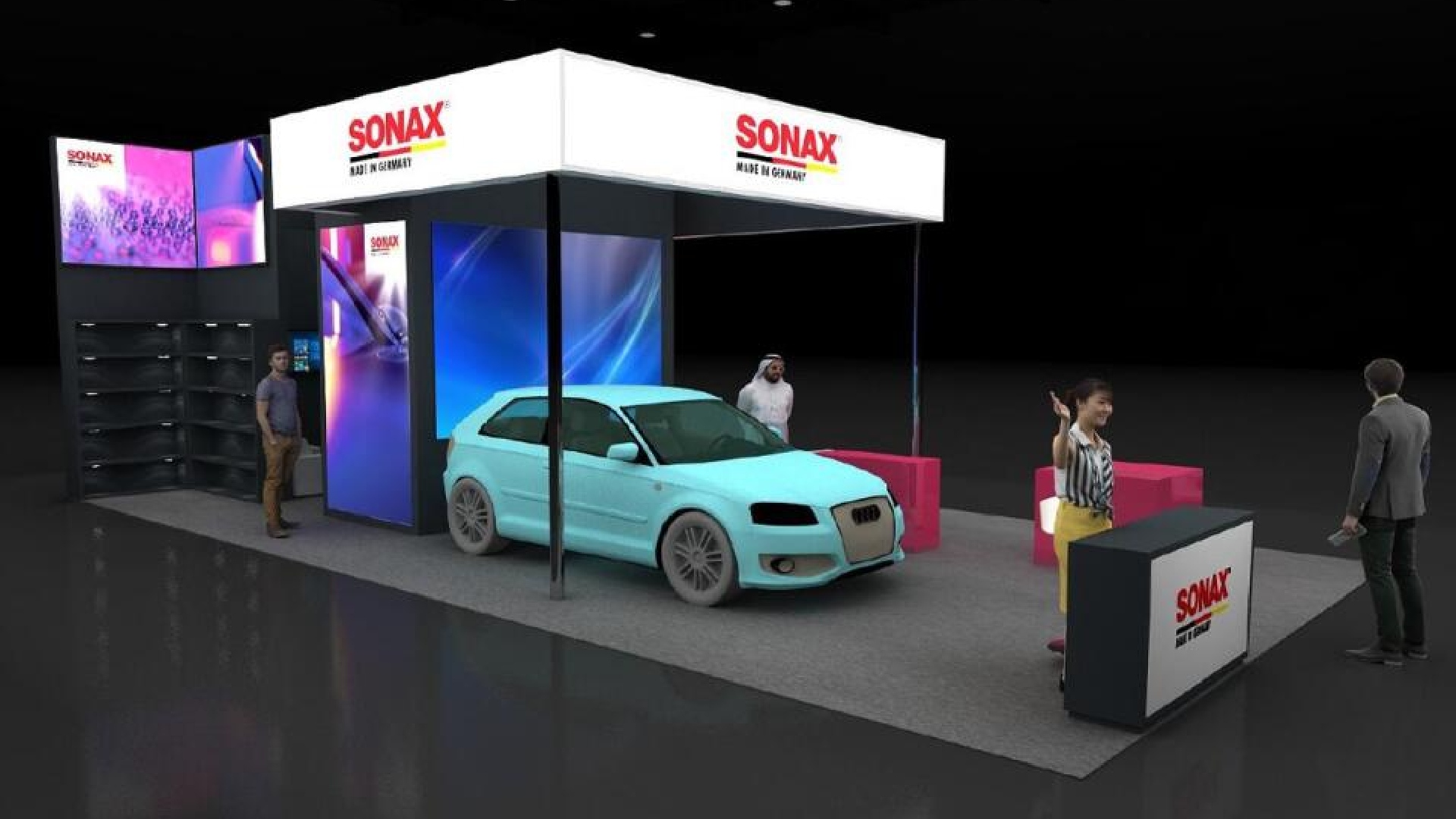
SONAX GmbH, the global leader in car care solutions, has recorded consistent double-digit growth across the GCC and wider Middle East region, averaging between 10% and 20% over the past five years. This sustained expansion underscores the company’s strong foothold in the region and its position as the number-one premium car care brand, reinforced by a 35-year partnership with its UAE distributor, RAMY Automotive.
Building on this success, SONAX will showcase its next-generation innovations at Automechanika Dubai 2025, where it will unveil two new additions to its Ceramic Coating line, CC Glass and CC Rim. These latest formulations highlight SONAX’s continuous investment in innovation, performance, and product excellence.
“Our continued double-digit growth underscores the strong trust and loyalty that SONAX has built among car enthusiasts and professionals across the UAE,” said Edwin Berberi, Senior Business Development Manager SONAX, GmbH. “At RAMY Automotive, we take pride in representing SONAX in the UAE and strengthening its legacy of excellence in car care. We are committed to further expanding our footprint while upholding the highest standards of quality and customer satisfaction across the region.”
Founded in 1950 in Neuburg, Germany, SONAX has built its reputation on premium quality, continuous research, and technical advancement. Its comprehensive portfolio spans car, motorcycle, bicycle, and industrial care, from manual detailing to automated washing, offering both private and professional users products that meet the highest global standards.
The GCC is one of the fastest-growing markets for high-end vehicle maintenance, driven by discerning customers who own luxury cars and demand superior quality care. As such, SONAX has continued to attract both individual car enthusiasts and commercial clients seeking long-lasting protection and professional-grade efficiency.
“Automechanika Dubai provides the perfect platform to strengthen our connections with customers and partners while introducing our latest innovations tailored for regional needs,” added Berberi. “Our mission remains clear: to deliver premium, sustainable, and high-performance solutions that make every vehicle shine.”
SONAX’s advanced Ceramic Coating products have set industry benchmarks since the launch of Nano Paint Protect in 2006. Today, the brand leads with a complete portfolio that includes CC Vinyl+PPF and CC Plastic+Rubber, and now expands further with the 2026 innovations CC Glass and CC Rim.
As part of its environmental commitment, SONAX integrates sustainability across its operations and product development. The company is ISO 14001 certified for its environmental management system and participates in the Responsible Care initiative, ensuring continuous improvement in environmental, health, and safety standards. Most of its products are made with 99.75% natural ingredients, reflecting its dedication to creating environmentally conscious products without compromising performance.
With a strong partner network across the GCC and Middle East, SONAX is uniquely positioned to serve regional and international customers. Its cooperation with RAMY Automotive in the UAE has been a cornerstone of its regional strategy, ensuring that customers across all markets receive the same quality, service, and reliability synonymous with the SONAX brand.
Automotive
Emarat Showcases Emojet’s Aviation Fuel Leadership at Dubai Airshow 2025
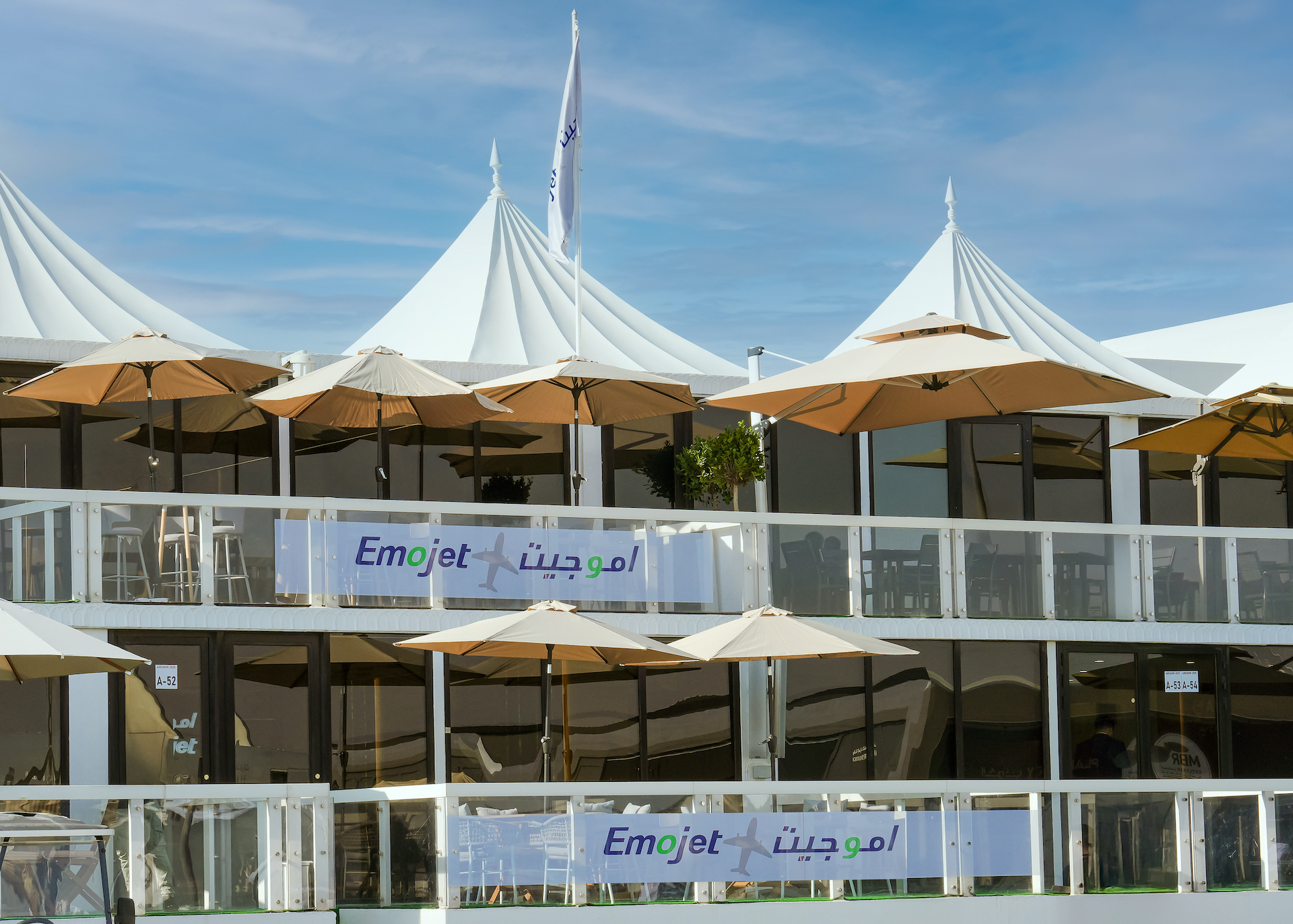
Emirates Petroleum Company PJSC (Emarat), a pioneer in the UAE’s oil and gas industry, will highlight the strength of its aviation fuel business at Dubai Airshow 2025 through its aviation subsidiary, Emojet, one of the leading into-plane fuel service providers at Dubai International Airport and Al Maktoum International Airport (Dubai World Central). Emojet will host airline, airport and industry partners at Chalet A52 from 17–21 November 2025, between 10:00 AM and 5:30 PM at Al Maktoum International Airport.
A key pillar of Emarat’s portfolio, aviation fuel is delivered through Emojet, which has proudly served the UAE’s world-leading aviation industry since 1992. Today, Emojet supplies aviation fuel to many of the world’s leading international airlines at Dubai International Airport and Al Maktoum International Airport, delivering award-winning into-plane services built on safety, reliability and service excellence.
Ali Khalifa Al Shamsi, Chief Executive Officer of Emarat, said, “Dubai Airshow is a natural platform for Emarat and Emojet. For more than three decades, we have been privileged to fuel the growth of the UAE’s aviation sector and support Dubai’s rise as a global hub for passengers and cargo. Through Emojet, we combine best-in-class infrastructure, rigorous safety and operational discipline with a partnership mindset that puts our customers’ network and growth ambitions at the centre. At Dubai Airshow 2025, we look forward to reinforcing our commitment to the aviation ecosystem and exploring new collaborations that will help shape the future of air connectivity in our region.”
At Dubai Airshow 2025, Emojet will focus on deepening existing relationships and building new partnerships with airlines, cargo operators, airports, and logistics players from across the region and beyond. This follows Emojet’s July 2024 agreement with Emirates SkyCargo to supply aviation fuel for the airline’s cargo operations at Al Maktoum International Airport – a model of the strategic collaborations the brand aims to replicate and expand during the show.
Salem Bin Suloom, Vice President – Aviation Sales at Emarat, said, “Emojet’s promise is simple – safe, reliable and efficient fueling, every time. Our customers operate in highly demanding environments, and they rely on us to deliver on-time performance, technical excellence and responsive service across every flight and every turnaround. At Dubai Airshow 2025, our focus is on listening to our partners, understanding their evolving operational needs and identifying new ways we can support them – whether through long-term supply agreements, expanded into-plane services, or new collaborations with airports and operators across the wider region. We warmly invite existing and prospective partners to visit us to discuss how Emojet can fuel their future plans.”
Emojet stands apart through its modern fleet of refuelling equipment, advanced control systems and highly trained operational teams. The company utilises the latest electronic data capture and interface systems to drive efficiency, accuracy and transparency, ensuring that its operations and equipment exceed mandated IATA standards.
Automotive
How Machine Learning Makes Super Cruise Smarter Every Day
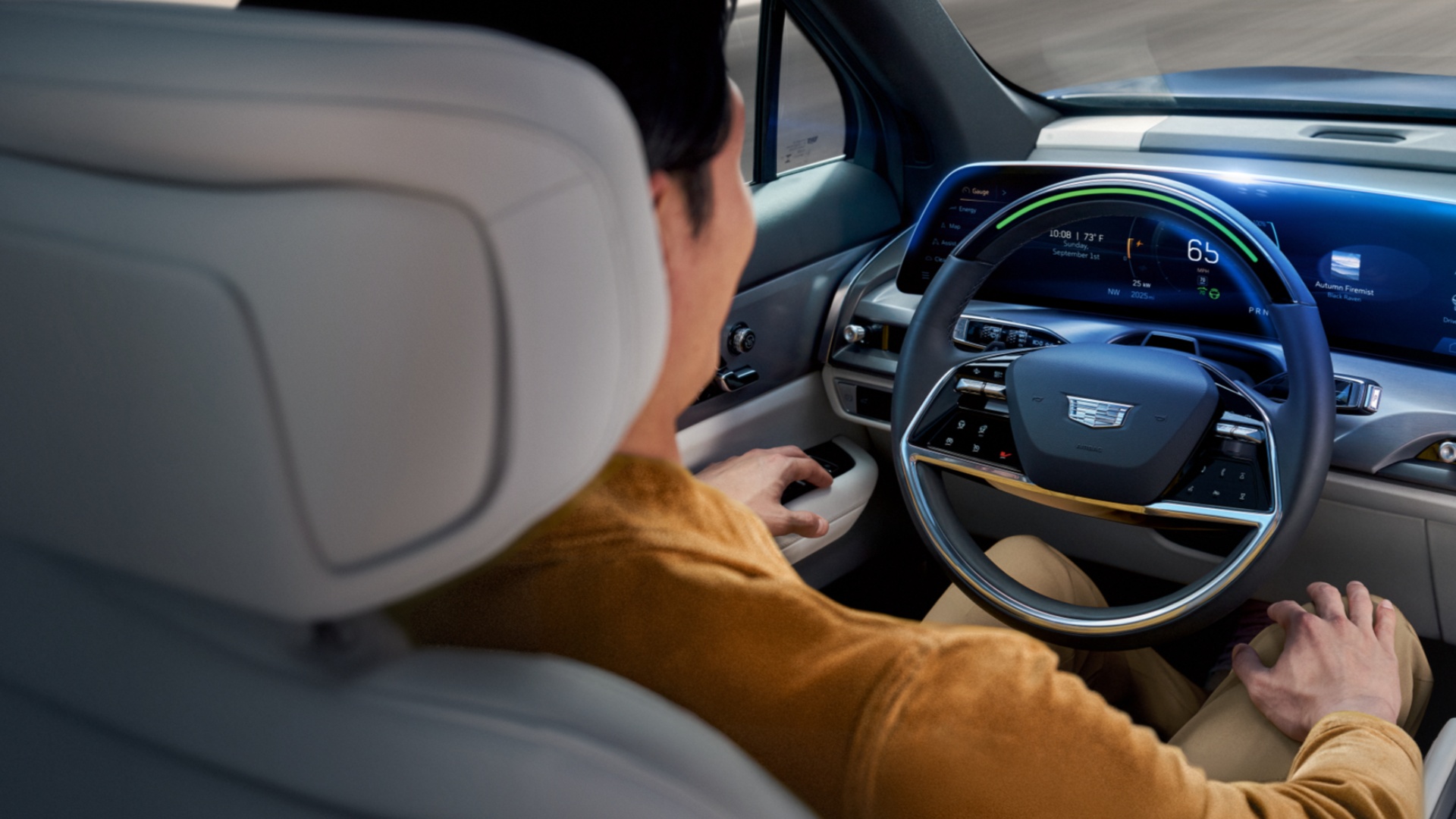
When technology works effortlessly, it’s easy to forget the incredible engineering behind it. That was the goal with GM’s Super Cruise hands-free driver assistance technology. Super Cruise is designed to execute precise lane centering, perform smooth lane changes, interact with a driver’s requests and handle steering maneuvers. These advanced capabilities are managed by a single, modular software stack called the Unified Lateral Controller, or ULC. Looking inside, GM engineers built a self-learning system made up of machine learning algorithms to update the vehicle’s dynamics and controls. The algorithm makes quick decisions to ensure efficiency.
Imagine you’re driving with Super Cruise engaged, and you initiate a left lane change with the turn signal. Super Cruise then starts to shift the vehicle into the left lane. But let’s say you then decide to stay in the current lane, so you signal to the right. Super Cruise will respond by bringing you back to the center of the original lane – a seemingly effortless transition, but one that requires complex and rapid calculations.
Super Cruise needs to maneuver as naturally as possible for drivers to remain comfortable and confident as they drive hands free. Diving deeper, the ULC must consider many data inputs: The curvature of the road from the LiDAR map data, lane geometry from the cameras, trajectory of the vehicle based on current speeds, vehicle load, current weather conditions, and the behavior of surrounding vehicles–all in a matter of seconds.
One of the unique features of Super Cruise is its ability to maintain precise hands-free lane centering while towing a trailer – a capability unmatched in the industry. One of Super Cruise’s standout features is its ability to maintain precise, hands-free lane centering even while towing a trailer—a capability unmatched in the industry and currently available on select GM vehicles. With a trailer attached, ULC automatically accounts in real time for the additional mass and its effects on vehicle dynamics, optimizing steering commands to control both the vehicle and the trailer.
The self-learning system analyzes real-time sensor data, enabling Super Cruise to make more accurate decisions and perform proactive adjustments, improving driver comfort and confidence over time. That allows Super Cruise to adapt for each vehicle and each driver in different environmental conditions.
Let’s go back to our trailering example: Tight lateral control is important for keeping both the vehicle and the trailer centered in the lane. The model learns how the presence of the trailer changes the vehicle’s steering response and works with the ULC to optimize its responses and keep the vehicle and trailer centered in the lane. This model also scales Super Cruise enabled by OnStar , and is now available across 13 vehicle models on select trims, and counting . No matter the shape, size, or weight of the vehicle, the ULC and our self-learning algorithms can adapt, reducing complexity. We’re bringing Super Cruise to consumers on more models, offering consistent, predictable, safe hands-free driving.
-

 Tech News1 year ago
Tech News1 year agoDenodo Bolsters Executive Team by Hiring Christophe Culine as its Chief Revenue Officer
-

 VAR8 months ago
VAR8 months agoMicrosoft Launches New Surface Copilot+ PCs for Business
-

 Tech Interviews2 years ago
Tech Interviews2 years agoNavigating the Cybersecurity Landscape in Hybrid Work Environments
-

 Tech News5 months ago
Tech News5 months agoNothing Launches flagship Nothing Phone (3) and Headphone (1) in theme with the Iconic Museum of the Future in Dubai
-

 Tech News2 years ago
Tech News2 years agoBrighton College Abu Dhabi and Brighton College Al Ain Donate 954 IT Devices in Support of ‘Donate Your Own Device’ Campaign
-

 Editorial1 year ago
Editorial1 year agoCelebrating UAE National Day: A Legacy of Leadership and Technological Innovation
-

 VAR1 year ago
VAR1 year agoSamsung Galaxy Z Fold6 vs Google Pixel 9 Pro Fold: Clash Of The Folding Phenoms
-

 Cover Story9 months ago
Cover Story9 months agoUnifonic Leading the Future of AI-Driven Customer Engagement










